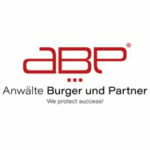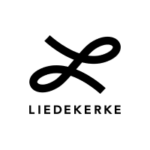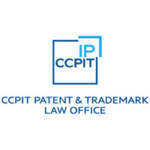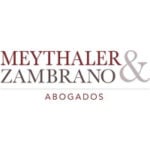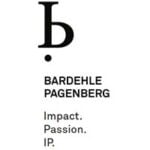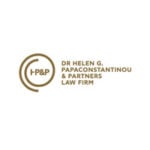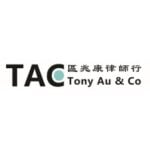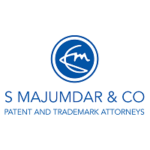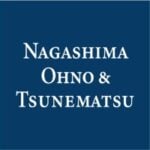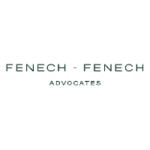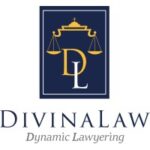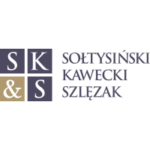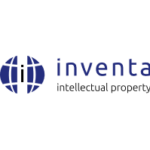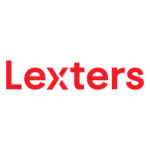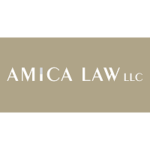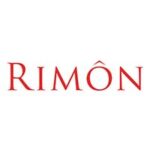-
What different types of intellectual property rights exist to protect: (a) Inventions (e.g. patents, supplementary protection certificates, rights in trade secrets, confidential information and/or know-how); (b) Brands (e.g. trade marks, cause of action in passing off, rights to prevent unfair competition, association marks, certification marks, hallmarks, designations of origin, geographical indications, traditional speciality guarantees); (c) Other creations, technology and proprietary interests (e.g. copyright, design rights, semiconductor topography rights, plant varieties, database rights, rights in trade secrets, confidential information and/or know-how).
(a) Inventions (e.g. patents, supplementary protection certificates, rights in trade secrets, confidential information and/or know-how);
- Patents: Protects inventions and utility models.
- Supplementary Protection Certificates: Not yet regulated in Brazil. However, patent holders who believe they have been adversely affected have been filing lawsuits seeking patent term adjustments based on the unjustified delays by the Brazilian PTO in analyzing patent applications.
- Trade Secrets/Confidential Information/Know-How: Protected under civil and criminal law through non-disclosure agreements and unfair competition laws.
(b) Brands (e.g. trade marks, cause of action in passing off, rights to prevent unfair competition, association marks, certification marks, hallmarks, designations of origin, geographical indications, traditional speciality guarantees);
- Trademarks: Protect distinctive signs used to identify goods or services.
- Cause of Action in Passing Off: Equivalent to unfair competition claims under Brazilian law.
- Certification Marks: Recognized and registrable in Brazil. Indicate that goods/services meet specific standards.
- Geographical Indications: Protects names indicating the qualities of goods or services due to its geographical origin.
- Collective Marks: Can be filed by a legal person who represents the relevant trade association and must stablish regulations governing use of the mark.
(c) Other creations, technology and proprietary interests (e.g. copyright, design rights, semiconductor topography rights, plant varieties, database rights, rights in trade secrets, confidential information and/or know-how).
- Copyright: Protects literary, artistic, and scientific works.
- Design Rights: Protects the aesthetic aspects of industrial products.
- Semiconductor Topography Rights: Protected under specific legislation.
- Plant Varieties: Protected under the Plant Variety Protection Law.
- Database Rights: Protected as a compilation under copyright law.
- Trade Secrets/Confidential Information/Know-How: As mentioned above, protected under civil and criminal law.
-
What is the duration of each of these intellectual property rights? What procedures exist to extend the life of registered rights in appropriate circumstances?
- Patents: 20 years from filing date (invention); 15 years from filing date (utility model). No extensions, but supplementary protection can be granted if the patent office delays issuance.
- Trademarks: 10 years from registration, indefinitely renewable in 10-year periods.
- Copyright: Copyright is vested on moral and property rights. Moral rights are perpetual while property rights are limited in time. The overall rule for the duration is 70 years, as of January 1st of the year following the author’s death. In the case of jointly owned works, the 70-year period will be as of the death of the last surviving co-author. No extensions.
- Design Rights: 10 years from filing, extendable for three successive 5-year periods (total 25 years).
- Semiconductor Topography Rights: 10 years from filing or first commercial exploitation. No extensions.
- Plant Varieties: 15 years from grant (or 18 years for trees and vines). No extensions.
- Geographical Indications: The duration period of the right is the same as the existence of the recognized product or service at their place of origin.
-
Who is the first owner of each of these intellectual property rights and is this different for rights created in the course of employment or under a commission?
- Patents, Design Rights: First owner is typically the creator or inventor. For works created under employment, the employer is the first owner unless otherwise agreed. In general, Brazil applies the first to file rule.
- Copyright: The first owner is the individual who created the intellectual work, pursuant to Article 11 of the Brazilian Copyright Law, but works of authorship created during employment typically belong to the employer.
- Semiconductor Topography Rights, Plant Varieties: The first owner is the individual or entity that registers the rights. Rights created under commission or employment are typically owned by the employer or commissioning party unless otherwise agreed.
- Geographical Indications: The procedural representative is the entity representing the collective authorized to request the registration of a Geographical Indication. The procedural representative is not the holder/owner of the registration itself but serves as the intermediary between the Brazilian PTO (Brazilian Patent and Trademark Office) and the producers or service providers.
-
Which of the intellectual property rights described above are registered rights?
Patents (Inventions and Utility Models), Trademarks, Design Rights, Geographical Indications, Semiconductor Topography Rights and Plant Varieties.
Although not mandatory, Copyrights can be registered.
-
Who can apply for registration of these intellectual property rights and, briefly, what is the procedure for registration?
The inventor, creator, or their legal successor can apply (individuals or businesses). In the case of works created under employment, the employer typically has the right to apply.
- Patents: File an application with the BPTO, including technical specifications, claims, drawings, and an abstract. Examination involves formal examination, publication, and substantive examination.
- Trademarks: File an application with the BPTO, including a mark representation, list of goods/services, and classification. The BPTO conducts a formal examination, publishes the application, and allows for opposition before granting registration.
- Copyright: Besides computer programs, which are registered by the Brazilian Patent and Trademark Office, intellectual works can be registered before public offices, such as the School of Fine Arts, the National Library and the School of Music. Each institution has its own procedure and related costs.
- Design Rights: File an application with the BPTO, including a design representation and description.
- Geographical Indications: File an application to the BPTO with proof of the link between the product’s qualities and its geographical origin.
- Semiconductor Topography Rights: File an application with the BPTO containing a detailed description of the topography.
- Plant Varieties: Register with the Ministry of Agriculture, Livestock, and Food Supply (MAPA), providing technical descriptions of the variety.
-
How long does the registration procedure usually take?
- Patents: Approximately 6-8 years.
- Trademarks: Approximately 12 months.
- Copyright: Approximately 120 working days.
- Design Rights: Around 6-12 months.
- Geographical Indications: Usually 12-24 months.
- Semiconductor Topography Rights: Approximately 6 months.
- Plant Varieties: Approximately 18-24 months.
-
Do third parties have the right to take part in or comment on the registration process?
- Patents and Trademarks: Third parties can file oppositions.
- Design Rights, Geographical Indications, Semiconductor Topography Rights: Generally, no formal opposition process exists, but third parties can file post-grant nullity actions.
- Plant Varieties: Third parties may submit oppositions during the examination period.
- Copyright: No.
-
What (if any) steps can the applicant take if registration is refused?
- Appeal: The applicant can file an appeal within 60 days from the publication of the refusal decision by the BPTO.
- Judicial Review: If the appeal is denied, the applicant can seek a judicial review The statute of limitations for filing a lawsuit expires in 5 years counted from the rejection/rejection maintenance decision.
- Copyright: Seek a judicial review.
-
What are the current application and renewal fees for each of these intellectual property rights?
- Patents: Application Fee: BRL 175 (roughly USD 35). Annuity Fee: Varies by year, e.g., BRL 295 (roughly USD 54) annually regarding the patent application; BRL 780 (roughly USD 142) from the third to the sixth year; BRL 1.220 (roughly USD 222) from the seventh to the tenth year; BRL 1.645 (roughly USD 300) from the eleventh to fifteenth year and BRL 2.005 (roughly USD 365) from the sixteenth year onwards.
- Trademarks: Application Fee: BRL 415 (roughly USD 75). Renewal Fee: BRL 745 (roughly USD 135).
- Design Rights: Application Fee: Approximately BRL 235-900 (USD 43-164). Renewal Fee: Approximately BRL 570-1.800 (USD 104-328).
- Geographical Indications: Application Fee: Approximately BRL 1.590 (USD 290) for Protected Geographical Indication (PDO) and BRL 2.135 (USD 389) for Protected Designation of Origin (PDI)
- Semiconductor Topography Rights: Application Fee: Approximately BRL 550-1.800 (USD 100-328).
- Plant Varieties: Application Fee: BRL 367 (roughly USD 68). Renewal Fee: Determined on a case-by-case basis.
- Copyright: Application Fee: Approximately BRL 20-80 (USD 4-16).
-
What are the consequences of a failure to pay any renewal fees and what (if any) steps can be taken to remedy a failure to pay renewal fees?
- Consequence: Non-payment results in the expiration or lapse of the IP right.
- Remedies: Some rights, like patents and trademarks, allow for a grace period (typically six months) for late payment with an additional fee. After the grace period, the right is permanently lost and cannot be revived.
-
What are the requirements to assign ownership of each of the intellectual property rights described above?
General Requirements:
- Written Agreement: The assignment of intellectual property rights (IPR) must be documented in a written agreement signed by both parties (typically assignor and assignee).
- Identification of Rights: The agreement should clearly identify the specific IP rights being transferred/assigned.
- Consideration: Although not always required, it is advisable to include a clause indicating the consideration (payment) involved in the assignment.
- Legal Formalities: The agreement must comply with general contract law requirements in Brazil, including capacity, consent, and legality, as we as other formalities required by the BPTO.
Specific Requirements per IP Right:
- Patents, Trademarks, Design Rights, Semiconductor Topography Rights: The assignment must be in writing and must include the specific identification of the IP right (e.g., patent number or trademark application/registration number). A trademark assignment must include all registrations or applications that cover similar or identical trademarks protecting similar or related goods or services, under the penalty of having the non-assigned registrations cancelled or the applications dismissed.
- Geographical Indications: These rights are generally collective and not transferable.
- Plant Varieties: The assignment must be in writing and submitted to the Ministry of Agriculture, Livestock, and Food Supply (MAPA).
- Copyright: Copyrights can be assigned, except for moral rights, which are inalienable and non-transferable. The assignment of economic rights must be explicitly stated in the contract.
- Trade Secrets/Confidential Information/Know-How: These can be transferred through confidentiality agreements or similar contractual arrangements.
-
Is there a requirement to register an assignment of any of these intellectual property rights and, if so, what is the consequence of failing to register?
- Patents, Trademarks, Design Rights, Semiconductor Topography Rights: The assignment must be registered with the BPTO to be enforceable against third parties.
- Plant Varieties: The assignment must be registered with the relevant authority (MAPA) for validity.
- Copyright: Registration of the assignment is optional but recommended for evidentiary purposes.
- Geographical Indications: Assignments are generally not applicable due to the collective nature of the right.
- Trade Secrets/Confidential Information/Know-How: No registration is required as these rights are protected through contractual obligations.
Consequence of Failing to Register:
- Patents, Trademarks, Design Rights, Semiconductor Topography Rights: The assignment is not enforceable against third parties, meaning the new owner cannot assert their rights in legal proceedings or against infringers.
- Plant Varieties: The assignment will not be recognized by MAPA, and the new owner cannot exercise the rights.
- Copyright: Failure to register does not invalidate the assignment, but it may lead to challenges in proving ownership in disputes.
- Trade Secrets/Confidential Information/Know-How: Since registration is not required, failure to document the transfer properly could result in disputes over ownership or breach of confidentiality claims.
-
What are the requirements to licence a third party to use each of the intellectual property rights described above?
General Requirements:
- Written Agreement: A license must be documented in a written agreement, clearly outlining the scope of the licensed rights, the duration, the territory, and the payment terms (royalties).
- Identification of Licensed Rights: The agreement should specifically identify the IP rights being licensed (e.g., patent number, trademark application/registration number).
- Consideration: Typically, the agreement should include a clause on the financial terms, such as royalties or lump-sum payments.
- Legal Formalities: The agreement must comply with Brazilian contract law, including mutual consent and legal capacity.
Specific Requirements per IP Right:
- Patents, Trademarks, Design Rights, Semiconductor Topography Rights: The license agreement should clearly specify the scope of use, including whether it is exclusive or non-exclusive.
- Geographical Indications: Generally, these rights cannot be licensed individually as they are collective rights associated with a specific region or group.
- Plant Varieties: Licensing must be in accordance with the Plant Variety Protection Law and usually requires specific terms related to the use and propagation of the variety.
- Copyright: Copyright licenses can cover the economic rights of reproduction, distribution, adaptation, etc. The moral rights remain with the author and cannot be licensed.
- Trade Secrets/Confidential Information/Know-How: Licensing is typically governed by confidentiality agreements that outline how the information can be used and shared.
-
Is there a requirement to register a licence of any of these intellectual property rights and, if so, what is the consequence of failing to register?
- Patents, Trademarks, Design Rights, Semiconductor Topography Rights: The license can be registered with the BPTO to be enforceable against third parties and for the licensee to assert their rights.
- Plant Varieties: Licensing must be registered with the Ministry of Agriculture, Livestock, and Food Supply (MAPA) to be valid.
- Copyright: Registration of the license is not mandatory but is recommended for evidentiary purposes. Typically submitted to the National Library Foundation.
- Geographical Indications: Licensing is generally not applicable due to the collective nature of the rights.
- Trade Secrets/Confidential Information/Know-How: No registration is required; the license is governed by contract law. However, for the purposes of issuing royalties, tax deductibility and enforcing against third-party infringers, the BPTO requires the contract to be registered with the General Coordination of Technology Contracts.
Consequence of Failing to Register:
- Patents, Trademarks, Design Rights, Semiconductor Topography Rights: If the license is not registered with the BPTO, it cannot be enforced against third parties, and the licensee may not have the legal standing to initiate enforcement actions.
- Plant Varieties: Unregistered licenses are not recognized by MAPA, and the licensee cannot exercise the licensed rights.
- Copyright: Failure to register does not invalidate the license, but it may create challenges in proving the existence and terms of the license in disputes.
- Trade Secrets/Confidential Information/Know-How: Since there is no registration requirement, failure to properly document the license can lead to disputes over the scope and terms of use.
-
Are exclusive and non-exclusive licensees given different rights in respect of the enforcement of the licensed IP, and if so, how do those rights differ?
- Exclusive License:
- The exclusive licensee has the right to use the IPR to the exclusion of all others, including the licensor. The exclusive licensee typically has the standing to enforce the IP rights against infringers without the need to involve the licensor.
- The exclusive licensee can potentially initiate legal action in their own name, depending on the terms of the license agreement and registration status.
- Non-Exclusive License:
- The non-exclusive licensee shares the right to use the IPR with the licensor and possibly other licensees. They generally do not have the right to enforce the IP rights independently of the licensor.
- Non-exclusive licensees usually need the licensor’s cooperation to take enforcement actions against infringers.
- Legal Standing in Enforcement:
- Exclusive Licensees: Often have the right to sue for infringement, particularly if the license is registered. The right to sue might also be specified in the license agreement.
- Non-Exclusive Licensees: Typically, do not have the right to enforce the IP rights and must rely on the licensor to initiate legal proceedings.
-
Are there criminal sanctions for infringement of any intellectual property rights, and if so, what are they and how are they invoked?
Yes, there are criminal sanctions for both industrial property (trademarks, patents, industrial designs) and intellectual property (copyright).
First of all, let’s look at Law No. 9,279/1996, which provides for criminal sanctions for the infringement of rights related to patents, trademarks and other aspects of industrial property. The main criminal sanctions are described in Article 183 of the Law and include:
- Imprisonment for 1 to 3 years and a fine for anyone who:
Unauthorised use of a registered trademark, as provided for in Article 130.
Reproduces without authorisation the object of a patent for an invention or a utility model, in accordance with Article 183.
- Imprisonment of 1 to 4 years and a fine for anyone who:
Manufactures, imports, sells or distributes products infringing patents or trademarks, pursuant to Article 183, paragraph 1.
- Imprisonment of 1 to 2 years and a fine for anyone who:
Forges documents for the registration of patents or trademarks, pursuant to Article 183, paragraph 2.
These sanctions apply to patent and trademark offences and may vary according to the seriousness of the offence and the circumstances of the case.With regard to copyright, Law 9610/1998 provides for criminal sanctions for infringements of copyright. The main criminal sanctions are listed in Article 184 of the Law and include:
- Imprisonment of 2 to 4 years and a fine for those who
Infringes copyright: This includes the unauthorised reproduction, distribution, display, performance or adaptation of protected works, according to Article 184(I). - Imprisonment of 1 to 3 years and a fine for anyone who
Forges, alters or modifies a work for the purpose of selling or distributing it as if it were original, under Article 184(II). - Imprisonment for 2 to 4 years and a fine for anyone who
Distributes, sells or exhibits for sale pirated copies of works protected by copyright, pursuant to Article 184, Section III.
In addition to these penalties, the Law provides for other sanctions and measures, such as:
- Confiscation and destruction of materials and equipment used for the production and distribution of unauthorised copies (Art. 186).
- Confiscation of property related to copyright infringement, such as books, CDs, DVDs, etc. (Art. 185-A).
These sanctions may be applied depending on the seriousness of the offence and the circumstances of the case.
In both cases, criminal sanctions may be applied as follows:
- Reporting and investigation:
Infringements of industrial and intellectual property rights such as patents, trademarks and copyrights can be formally reported to the police or the public prosecutor’s office.
The competent authorities will carry out an investigation to establish the existence of the offence and gather evidence to support the complaint.
- Initiation of criminal proceedings:
On the basis of the investigation and the evidence gathered, the public prosecutor may file a formal complaint with the courts. This complaint is the starting point for criminal proceedings.
The complaint is then received by the competent judge, who may decide to open criminal proceedings.
- Judicial proceedings:
During the trial, the parties (prosecution and defense) present their evidence and arguments. The defendant may be accused of offences such as misuse of a trademark, unauthorized reproduction of patents or copyright infringement.
The judge evaluates the evidence and witnesses, and may call in experts to clarify technical aspects of the offence.
- Sentencing:
After the investigation, the judge hand down sentence. If the defendant is found guilty, the sentence will include criminal penalties, such as imprisonment and a fine, as provided for in the IP Law, as described above.
The penalties for IP offences vary according to the seriousness of the offence.
- Execution of the sentence:
After conviction, the sentence must be carried out in accordance with the court’s decision. This may include imprisonment, payment of a fine, and other measures determined by the judge.
-
What other enforcement options are available for each of the intellectual property rights described above? For example, civil court proceedings, intellectual property office proceedings, administrative proceedings, alternative dispute resolution.
Other relevant measures related to the protection of industrial and intellectual property, in addition to the aforementioned sanctions, are civil and administrative in nature.
Civil measures consist of lawsuits that can address various issues. For example:
- Compensation for Damages:
Material and Moral Damages: The rights holder may seek compensation for both material and moral damages resulting from the infringement. This includes compensation for financial losses and damage to reputation.
Lost Profits: The plaintiff may request compensation for profits that were lost due to the infringement.
- Lawsuit for Injunction:
Prohibition of Continued Conduct: The rights holder can request that the infringer immediately cease the infringing activity, such as the production or sale of products that violate patents or trademarks.
- Destruction of Products and Materials:
Destruction of Products and Equipment: The court may be asked to order the destruction of infringing products and the materials used in the manufacture or reproduction of unauthorized copies.
- Market Withdrawal:
Withdrawal of Products: The rights holder can obtain a court order for the removal of infringing products from the market, including the removal of items that violate patents or trademarks.
- Seizure and Confiscation:
Seizure of Products: In some cases, the seizure and confiscation of products being sold in violation of intellectual property rights may be requested.
- Lawsuit for Declaration of Non-Violation:
Declaratory Lawsuit: If there is doubt about the validity of an intellectual property right or the existence of an infringement, a court declaration of non-infringement can be requested.
Administrative measures that can be taken include extrajudicial and/or administrative actions. These are:
- Notification and Request for Cessation:
Extrajudicial Notification: The rights holder may send an extrajudicial notice to the infringer, demanding cessation of the infringement and compensation for damages before initiating a lawsuit.
- Measures before the BPTO (National Institute of Industrial Property):
Opposition to Registration/Deposit: This mechanism allows third parties to contest a registration application being examined by the National Institute of Industrial Property (INPI) in Brazil. The goal is to prevent the registration of objects that may violate pre-existing rights or cause market confusion.
Appeal against Registration/Patent Grant: This legal tool allows contesting, still administratively and before the BPTO, a favorable decision regarding a registration or patent application.
Administrative Nullity Process: This legal tool is used to challenge the validity of a trademark or patent registration already granted by the BPTO. This process can be initiated by any person or entity with a legitimate interest, claiming that the registration violated legal or regulatory norms.
- Inspection and Sanctions:
Inspection Lawsuit: Inspection bodies may conduct operations to verify compliance with industrial and intellectual property laws, such as inspecting products at fairs and markets.
Administrative Fines: Depending on the violation, administrative fines may be imposed by inspection authorities.
- Complaint to the Copyright Council (CDA):
Complaint and Mediation: In the case of copyright, complaints can be made to the Copyright Council, which may offer mediation and resolve infringement issues.
These measures are crucial to ensure that industrial and intellectual property rights are respected and to protect rights holders against infringements and abuses. The combination of civil and administrative actions allows for a comprehensive approach to resolving disputes and correcting violations.
-
What is the length and cost of such procedures?
Lawsuits involving industrial and intellectual property typically last between one (1) and four (4) years. However, the average duration of an industrial property lawsuit can vary widely. Simple cases may be resolved in less than a year, while more complex cases may take several years, especially if there are appeals or significant technical disputes. The complexity of the case, the court’s workload, and the legal strategies used are crucial factors influencing the total process time.
Administrative procedures have varying average durations depending on their nature:
- Administrative Nullity Process: The average time for resolving a nullity process for a trademark or patent can range from 12 to 24 months, depending on the complexity and the number of appeals and arguments presented.
- Administrative Opposition: The average time for resolving a trademark registration opposition can be 12 to 18 months.
- Administrative Appeals: The time for analyzing and deciding on appeals against BPTO decisions can vary from 6 to 12 months, depending on the reviewing instance and the complexity of the appeal.
The duration of these procedures can be influenced by factors such as the complexity of the request, the BPTO’s workload, and the existence of disputes, among others.
The costs involved in judicial measures can vary widely depending on the type of lawsuit, the case’s complexity, the jurisdiction, and other specific factors.
Initial costs, i.e., the fee to initiate the lawsuit, can range on average from BRL 200,00 to BRL 5.000,00.
There are also costs for filing appeals that seek to modify the merits of decisions, which can vary from BRL 200,00 to BRL 10.000,00 and may reach higher amounts depending on the case’s value and the judgment.
Additionally, there are expenses for expert reports commonly required in cases involving industrial and intellectual property, which can range on average from BRL 5.000,00 to BRL 50.000,00.
For procedures before the Brazilian PTO in 2024, a fee of BRL 590,00 is required for an administrative nullity process; BRL 475,00 for appeals and BRL 355,00 for opposition.
-
Where court action is available, please provide details of which court(s) have jurisdiction, how to start proceedings, the basics of the procedure, the time to trial, the format of the trial, the time to judgment and award of relief and whether any appeal is available.
Lawsuits involving violation of industrial property and copyright should be filed, in most of the cases, before state courts. Lawsuits challenging the validity of an BPTO act should be filed before Federal Courts.
It is important to clarify that infringement lawsuits, depending on the state in which they are filed, may or may not be reviewed by specialized courts. This is because most Brazilian states do not have specialized chambers. In these proceedings, the rights holder is the plaintiff, and those who committed the infringement are the defendants.
In such proceedings, it is possible to request compensation for moral damages, which are presumed in intellectual property cases, and material damages. The amounts for moral damages can range from BRL 1.000,00 to BRL 100.000,00 on average.
As far as material damages are concerned, they will generally have to be settled after the judgment has become final and unappealable. The amounts are calculated according to the criteria set out in article 210 of the IP Law:
Art. 210. Loss of profits shall be determined by the criterion most favorable to the injured party, among the following:
I – the benefits that the injured party would have been earned if the violation had not occurred; or
II – the benefits earned by the author of the infringement of the right; or
III – the remuneration that the author of the violation would have paid to the holder of the violated right for the granting of a license that allowed him to legally exploit the property.
The nullity lawsuit will be filed before the Federal Court, as it is the competent court to review acts rendered by the BPTO. Considering that the BPTO is based in the state of Rio de Janeiro, most of the lawsuits involving industrial property rights are filed before the Federal Courts of that state, with four IP specialized courts at the trial level and two similarly specialized panels at the appellate court, dedicated to cases like the present. As for the proceedings, the BPTO will initially be the defendant, but it may review its administrative understanding and potentially agree with your claims.
Here is a step-by-step summary of the proceedings at the trial level for both types of lawsuits:
- Filing of the Lawsuit;
- Decision on the preliminary injunction relief – between four days and a week after the filing;
- Defendants’ full responses – around three months after the filing;
- Plaintiff’s deadline to present a reply – around one month after the defendants’ full responses;
- Parties will specify if they wish to produce more evidence, such as supplementary documents; testimonial evidence; and technical evidence – around one month after the reply. In cases involving the invalidity of patents, technical expertise is usually required and the technical report is usually filed within 6 to 10 months.
- If further evidence is unnecessary, the judge will rule on the merits – around 8 months after the above step.
After the ruling on the merits, the losing party may file an appeal to the appellate court and, further, to the superior courts.
Until judgment, state court proceedings can take between 12 and 18 months. Federal court proceedings can take between 12 and 24 months on average.
Note that in both cases, it is possible to appeal, initially to regional courts and, if necessary, to higher courts.
-
What customs procedures are available to stop the import and/or export of infringing goods?
To prevent the importation and/or exportation of goods infringing intellectual property rights in Brazil, there is a set of customs and legal procedures involving the Federal Revenue Service, the National Institute of Industrial Property (INPI), and, in some cases, the judiciary.
First, the intellectual property rights holder, such as for trademarks, patents, and industrial designs, can formally register these rights with the Federal Revenue Service. This registration facilitates customs enforcement against the entry or exit of goods that infringe these rights. With registration, the Federal Revenue Service is notified of the intellectual property rights that need protection, allowing a more efficient response to infringement cases.
When an infringement is identified, the rights holder can directly request the Federal Revenue Service to take measures to prevent the entry of goods that allegedly infringe their rights. This involves submitting a formal complaint with detailed information about the suspicious goods, such as descriptions, model numbers, and any relevant data to help identify the goods. Additionally, the rights holder must provide supporting documentation, such as copies of the intellectual property registration and evidence of infringement.
If necessary, the Federal Revenue Service may adopt temporary measures to suspend the release of the suspected goods while investigating the infringement claim. This means that goods can be held at ports, airports, or customs clearance zones until the issue is resolved.
In some cases, the rights holder may seek a court order for the seizure of the goods. This judicial procedure is used when administrative measures are insufficient to resolve the issue or when the infringement is particularly severe. The court lawsuit must be based on substantial evidence demonstrating the violation of intellectual property rights.
Additionally, there are specific administrative procedures that can be initiated directly with the Federal Revenue Service. These generally involve submitting a complaint and cooperating with customs authorities to conduct inspections and possible seizures of infringing goods.
International cooperation also plays a significant role. For goods entering or leaving Brazil and related to international smuggling or counterfeiting networks, Brazil participates in treaties and international agreements that facilitate customs cooperation and the exchange of information on intellectual property rights violations.
In cases of counterfeit products, the Federal Revenue Service can adopt special procedures and work with specialized agencies to conduct detailed inspections and handle the goods according to current regulations. Continuous enforcement measures are also applied to monitor and control the movement of goods at ports and airports, ensuring that products infringing intellectual property rights are identified and prevented from entering or leaving the country.
Moreover, the Federal Revenue Service and other entities may promote educational programs and training for trade operators and customs authorities to raise awareness and improve the ability to detect infringing goods.
These procedures are essential to protect intellectual property rights and ensure that infringing goods are not sold in Brazil or exported to other countries. The effectiveness of these mechanisms depends on the collaboration between rights holders, customs authorities, and the judiciary, and it is advisable to consult a specialized intellectual property lawyer and follow the established processes of the Federal Revenue Service and the BPTO.
-
Are any non-court enforcement options or dispute resolution mechanisms mandatory in respect of intellectual property disputes in any circumstances? If so, please provide details.
In Brazil, extrajudicial resolution of intellectual property disputes is not mandatory in all circumstances but is often encouraged as an alternative to lawsuits.
However, although such resolutions are generally not mandatory, depending on the specific case, there may be mandatory measures for resolving the dispute amicably. For instance, when conflicting parties have a contract that includes a mediation or arbitration clause.
-
What options are available to settle intellectual property disputes in your jurisdiction?
In Brazil, intellectual property disputes can be handled through different judicial and extrajudicial forms, each with its specific characteristics and procedures. For disputes involving intellectual property, one option is judicial resolution, which can be initiated when parties cannot reach an agreement through other means. Lawsuits related to intellectual property, such as disputes over trademarks, patents, or copyrights, are handled in civil courts, and in specific cases, there are specialized courts or chambers for intellectual property. Besides the main lawsuits, it is possible to request precautionary measures to protect rights while the process is ongoing. These measures may include the seizure of goods or suspension of infringing activities. If the initial decision is unsatisfactory, parties can appeal to higher courts, such as appellate courts and superior courts, for a new review of the issue.
In addition to judicial options, there are extrajudicial mechanisms for resolving intellectual property disputes. Mediation is a process where a neutral mediator helps the parties reach an agreement. Although not mandatory, mediation is recommended as a fast and cost-effective alternative for resolving disputes. Arbitration is another option, where an arbitrator or a panel of arbitrators decides the dispute. In Brazil, arbitration is governed by the Arbitration Law (Law No. 9,307/1996) and can be used to resolve intellectual property disputes, especially when provided for in a contract. Conciliation is similar to mediation, but the conciliator may suggest specific solutions for resolving the dispute.
At the administrative level, the National Institute of Industrial Property (INPI) offers specific procedures for disputes related to trademarks and patents. Opposition to trademark registration allows anyone to present an objection to the BPTO against a trademark registration application considered conflicting with their own registered trademark. Additionally, after registration, one can request the BPTO to declare the registration null if it was granted contrary to the law. The BPTO also allows for the filing of administrative appeals for reviewing decisions, offering a way to resolve issues without going to court.
Moreover, many intellectual property contracts, such as licensing and franchise agreements, contain dispute resolution clauses that specify methods like mediation or arbitration to resolve conflicts. These clauses make certain extrajudicial procedures mandatory according to the agreed terms of the parties.
In the field of customs enforcement, the Federal Revenue Service can take measures to prevent the importation and exportation of goods that infringe intellectual property rights. This includes holding suspected goods at ports, airports, or customs clearance zones. In cases of counterfeit or pirated products, the Federal Revenue Service may also proceed with the seizure of goods to prevent their commercialization.
Finally, Brazil participates in international treaties and agreements that facilitate cooperation to resolve intellectual property disputes on a global scale. These agreements allow for the exchange of information and coordination between customs and judicial authorities from different countries to address intellectual property rights violations.
Each of these mechanisms has its particularities and may be suitable depending on the nature of the dispute and the specific circumstances. To choose the best approach, it is advisable to consult a specialized intellectual property lawyer, who can provide appropriate guidance and ensure the protection of the rights involved.
-
What is required to establish infringement of each of the intellectual property rights described above? What evidence is necessary in this context?
To establish infringement of intellectual property rights in Brazil, the following elements must be proven, depending on the specific type of IP right.
To establish the infringement of patent rights, the plaintiff must demonstrate that the defendant has used, produced, sold, or offered for sale a product or process that falls within the scope of a valid patent claim. Infringement can be direct (literal infringement of the claim) or indirect (equivalents). Evidence typically includes expert analysis comparing the patent claims with the alleged infringing product or process, technical documents, and possibly laboratory tests.
When it comes to trademarks, there must be shown that the defendant used a mark that is identical or confusingly similar to the plaintiff’s registered trademark in a way that causes or is likely to cause confusion among consumers. Evidence may include consumer surveys, expert reports on the likelihood of confusion, and documentation showing the defendant’s use of the infringing mark.
If there’s an industrial design rights infringement, the plaintiff must demonstrate the production, import, sale, or offer for a product that reproduces or imitates the industrial design registered by the plaintiff without authorization. Evidence might include product comparisons, expert reports, and market analysis showing the extent of copying or imitation.
Copyright rights infringements follow the same path. The plaintiff must establish that the defendant has reproduced, distributed, performed, or displayed the copyrighted work without authorization. This typically involves proving access to the copyrighted work and demonstrating substantial similarity between the original work and the alleged copy.
-
How does the court acquire any necessary information (fact or technical) and in what circumstances does it do so? In particular a) Is there a technical judge, a judge with technical experience, a court appointed expert, an expert agreed by the parties, and/or parties’ expert witness evidence? b) What mechanisms are available for compelling the obtaining and protecting of evidence? Is disclosure or discovery available?
The Brazilian judiciary has various mechanisms to acquire the necessary information, whether factual or technical, to decide intellectual property cases.
- Types of Experts and Technical Assistance:
In cases that require technical expertise, the court may appoint an independent expert to analyze the technical aspects of the case. The expert’s report is considered key evidence, although it is not binding on the judge.
In addition, each party can appoint their own technical expert to counter or supplement the court-appointed expert’s analysis. The reports from these party-appointed experts are submitted as evidence.
In Brazil, judges are generally not required to have technical expertise, so they rely on court-appointed experts or other mechanisms to understand complex technical issues.
- Mechanisms for Obtaining and Protecting Evidence:
The court can issue orders for the search and seizure of products, documents, or other evidence that may be crucial to establishing infringement. This is often used in cases of trademark counterfeiting or patent infringement.
If any documents are deemed essential for the resolution of the dispute, the court can also order a party to produce documents under their control that are relevant to the case. On the other hand, Brazilian law does not have an extensive discovery process like in common law jurisdictions, but there are mechanisms for ordering the production of specific evidence.
Parties can request the court to compel the other party to disclose documents or information that is crucial for their case. The court may grant preliminary injunctions to preserve evidence that might otherwise be destroyed or tampered with, especially in cases where there is a risk that the infringing party might take steps to hide or destroy the evidence.
-
How is information and evidence submitted to the court scrutinised? For example, is cross-examination available and if so, how frequently is it employed in practice?
The judge scrutinizes all evidence submitted, including expert reports, documents, and witness testimonies. The court has the discretion to disregard evidence that is deemed unreliable, irrelevant, or insufficiently substantiated.
The court-appointed expert’s report, for instance, is a critical piece of evidence. However, the judge is not bound by the expert’s findings and may consider other evidence or even appoint a second expert if necessary.
While Brazilian law allows for the cross-examination of witnesses, it is not as commonly used as in some other legal systems. Nevertheless, in complex IP cases, cross-examination of technical experts or witnesses may be employed, particularly when there are conflicting technical reports.
-
What defences to infringement are available?
Several defenses can be raised in response to an infringement claim, depending on the type of intellectual property right. The defendant may argue, for instance, that the patent, trademark, or other IP right is invalid. This could be due to lack of novelty, non-obviousness, lack of distinctiveness, or other reasons outlined in the IP law.
The defendant can also argue that their actions do not constitute infringement, either because there is no similarity between the products/marks or because the patent claims are not applicable. A defense based on prior use can be raised if the defendant can prove they were using the invention or trademark in good faith before the filing date of the patent or the trademark registration.
In copyright cases, the defendant may claim that their use falls under the exceptions to copyright protection, such as fair use for purposes of criticism, comment, news reporting, or educational purposes.
-
Who can challenge each of the intellectual property rights described above?
In Brazil, challenges to intellectual property rights can be initiated by different parties, depending on the nature of the right in question.
For inventions such as patents, supplementary protection certificates, rights to trade secrets, confidential information and/or know-how, competitors of the right holder can challenge the validity of the patents and certificates. In addition, previous patent owners can challenge new patents if they claim that the invention claimed is similar to their own protected invention.
Individuals or organizations that believe their trade secrets or confidential information have been misappropriated can challenge rights to inventions based on this data.
Regarding trademarks are concerned, competing companies and individuals can question the validity of the trademark registration. In addition, owners of similar prior trademarks can challenge the granted trademark if it infringes their existing rights.
For other creations creations, technologies and property interests, such as copyright and design rights, rights in the topography of semiconductors, plant varieties, database rights, rights in trade secrets, confidential information and/or know-how, competitors and interested Third Parties who believe that copyright, design rights or other related rights adversely affect their ability to operate or compete can challenge these rights.
In addition, holders of prior rights who have similar creations can file challenges to new creations.
-
When may a challenge to these intellectual property rights be made (e.g. during any registration process or at any time during the subsistence of the right)?
In Brazil, challenges intellectual property rights can be made at different times depending on the type of right and the applicable legal process.
For inventions (Patents, Supplementary Protection Certificates, Trade Secrets), it is possible to challenge during the registration process, and oppositions and administrative nullity proceedings can be filed. However, it is important to note that there is a limitation period for challenging the validity, which is generally 5 years after the registration is granted.
For trademarks, the proceedings are similar. During the grant period, third parties can file oppositions to the trademark application, and after it has been granted, an Administrative Trademark Nullity Proceeding can be filed. In addition, its validity can be challenged in judicial proceedings. However, it is crucial to note that there is a limitation period for challenging the validity of a trademark, generally 5 years after the registration is granted. After this period, the possibilities of contestation may be limited, except in exceptional cases such as proven bad faith on the part of the owner.
During the Protection time, if counterfeiting or unfair competition is suspected, the trademark owner can take legal action. Competitors or interested parties can also challenge the use or registration of a trademark if they believe it is being used improperly or deceptively.
For other creations and technologies, some jurisdictions may have processes for opposing the registration of works, although often copyright exists automatically without the need for formal registration. Challenging the rights of other creations can usually be done during the use of the work.
-
Briefly, what is the forum and the procedure for challenging each of these intellectual property rights and what are the grounds for a finding of invalidity of each of these intellectual property rights?
For inventions such as patents and trademarks, during the process of granting the registration, the competent authority to contest the rights is the National Institute of Industrial Property (“BPTO”), where the Patent is registered. Once the registration has been granted, and there are no further steps to be taken in the administrative area, the competent body to contest the case is the Brazilian courts, where the matter will be taken to court.
The grounds for invalidating a patent are lack of innovation, inventive step and lack of industrial application.
As for the grounds for arguing the invalidity of a trademark, it is crucial to evaluate whether it falls into any of the categories of non-registrability established by Art. 124 of the Industrial Property Law.
These include trademark that incorporate coats of arms, weapons, medals, flags, emblems or official badges, as well as their designations or imitations, are not registrable. Single letters, figures or dates can only be registered if they are sufficiently distinctive. The trademark may also not contain expressions, figures, drawings or signs that contradict morals, good customs, or that offend the honor and image of persons, or that violate freedom of conscience or belief.
Other impediments include the use of designations or acronyms of entities or public bodies not requested by these entities, or the reproduction and imitation of distinctive signs of third parties that may cause confusion or association with existing establishments or companies. Generic, common or descriptive signs related to the product or service they are intended to distinguish are also not registrable, unless they have a distinctive form. Trademarks used only as a means of advertising, colors and their names without a particular combination, and geographical indications that may induce confusion are also among the signs not allowed.
Trademarks that induce false indications about the origin, source, nature, quality or usefulness of goods or services are not allowed. Trademarks that imitate official signs, collective marks or certification marks of third parties without proper authorization, or that reproduce titles, policies or coins of any governmental sphere, are also not registrable. The same applies to trademarks that use civil names, signatures, pseudonyms or images of third parties without consent, and to works protected by copyright without the author’s authorization.
Trademarks that use technical terms or imitate well-known third-party trademarks, causing confusion or association with previously registered trademarks, are equally unacceptable. Finally, the necessary, common or ordinary shape of the product or packaging, and marks that imitate objects already protected by third party industrial designs, are also not registrable. All these grounds must be carefully analyzed when arguing for the invalidity of a trademark, ensuring that any request for cancellation is duly grounded in the applicable legislation.
For other creations, challenges can be made through the courts, with the grounds for invalidity being lack of originality, plagiarism or infringement of existing copyright.
-
Are there any other methods to remove or limit the effect of any of the intellectual property rights described above, for example, declaratory relief or licences of right?
There are several methods available to suppress or limit the effects of intellectual property rights in Brazil, such as patents and trademarks. A common approach is the declaratory lawsuit, which aims to obtain a court decision on the validity, existence or extension of an intellectual property right. Through this lawsuit, a formal declaration can be sought that recognizes the invalidity of a right or limits its application, clarifying the territorial scope or extent of its protection.
Another relevant method is the abstention lawsuit, which can be used to prevent the holder of an intellectual property right from exercising their prerogatives in an abusive or harmful way. This aims to prevent misuse of the right or restrict its application to certain products or territories, as necessary.
Rights licenses are also an important tool. They allow third parties to use an intellectual property right in a controlled manner, by agreement with the owner. There are voluntary licenses, where the right holder and the licensee agree on the terms of use, and compulsory licenses, which can be granted by judicial or administrative authorities when there is a relevant public interest or if the right holder is abusing their exclusivity.
Negotiations and out-of-court settlements are also common in resolving disputes related to intellectual property rights. Through coexistence agreements, the parties can reach an understanding on the use of trademarks or patents in order to avoid confusion or overlapping rights. Financial compensation, such as the payment of royalties, is also often used to regulate the use of intellectual property rights.
-
What remedies (both interim and final) are available for infringement of each of the intellectual property rights described above?
In Brazil, intellectual property rights, encompassing inventions, trademarks, and other technological creations, are comprehensively protected by various remedies in cases of infringement, available both on an interim and final basis.
For inventions, such as patents, trade secrets, and know-how, it is possible to obtain preliminary injunctions to immediately suspend the infringement while the case is ongoing. In urgent cases, the rights holder can request precautionary measures, such as the search and seizure of products or documents proving the infringement, as well as asset freezing to ensure future enforcement of a judgment. At the final stage, courts usually grant permanent injunctions, ensuring the infringer ceases their activities, and order damages for economic losses, calculated based on actual damages or hypothetical royalties. Additionally, the court may order the surrender or destruction of the infringing products.
In the case of trademarks, beyond the protection of registered trademarks, Brazilian law recognizes actions such as unfair competition. As interim measures, the rights holder can request preliminary injunctions to prevent the unauthorized use of the mark and preserve its market value. In the final judgment, remedies include damages for material and moral harm, and in some cases, corrective advertising to mitigate damage to the brand’s reputation. Infringing products may be ordered to be surrendered to the rights holder or destroyed, preventing the continuation of the violation.
In regard to creations protected by copyright, industrial designs, semiconductor topographies, and other forms of protection, Brazilian law allows, during the proceedings, the use of preliminary injunctions to halt unauthorized exploitation and search and seizure orders to preserve evidence. Final remedies include damages, calculated based on lost revenue or hypothetical licensing, and courts may also require compensation for moral damages when applicable, such as in cases involving the violation of moral rights of authorship. Infringing products or copies may also be ordered to be surrendered to the rights holder or destroyed.
In summary, Brazilian law provides a wide range of effective measures to protect intellectual property rights and to ensure proper compensation to the rights holder and guarantee the long-term cessation of the infringement.
-
What are the costs of enforcement proceedings and is any kind of costs recovery available for successful parties? Is there a procedural mechanism enabling or requiring security for costs?
In Brazil, the costs of enforcement proceedings in intellectual property disputes can vary depending on the complexity and scope of the case, but they generally include court fees, expert fees (if applicable), attorney fees, and any costs related to obtaining evidence or executing judicial orders, such as search and seizure operations. Court fees are calculated based on the value of the case, which is typically determined by the claimant when filing the lawsuit. These fees must be paid at the outset of the proceedings, and if the case involves appeals, additional fees will apply at each appellate stage. In practice, court fees can range from relatively modest amounts to substantial sums in high-value disputes.
Brazilian law recognizes two types of attorney fees in intellectual property cases. First, contractual fees are agreed upon between the attorney and the client and can vary significantly based on the attorney’s experience, reputation, and the complexity of the case. These fees are typically paid by the client directly to their attorney. Second, fees are awarded by the court to the prevailing party and are payable by the losing party. In accordance with the Brazilian Code of Civil Procedure, these fees are generally set at between 10% and 20% of the case’s value, depending on the court’s discretion.
Intellectual property cases may require technical expertise, particularly in disputes involving patents, industrial designs, or trade secrets. The court may appoint an expert to assist in determining technical aspects of the case, and the costs of the expert’s report are typically borne by the parties. These fees can be significant, especially in complex cases.
Under Brazilian law, the prevailing party is entitled to recover the court costs, including attorney fees and expert fees from the losing party. However, in practice, an enforcement of cost awards can be challenging if the losing party lacks sufficient assets.
According to Brazilian procedural law, foreign companies without a headquarters or assets in Brazil are generally required to provide security for costs as a condition for pursuing litigation. This mechanism is intended to protect the defendant against the risk of not recovering costs if the foreign claimant loses the case and is unable to pay the legal fees.
Brazil: Intellectual Property
This country-specific Q&A provides an overview of Intellectual Property laws and regulations applicable in Brazil.
-
What different types of intellectual property rights exist to protect: (a) Inventions (e.g. patents, supplementary protection certificates, rights in trade secrets, confidential information and/or know-how); (b) Brands (e.g. trade marks, cause of action in passing off, rights to prevent unfair competition, association marks, certification marks, hallmarks, designations of origin, geographical indications, traditional speciality guarantees); (c) Other creations, technology and proprietary interests (e.g. copyright, design rights, semiconductor topography rights, plant varieties, database rights, rights in trade secrets, confidential information and/or know-how).
-
What is the duration of each of these intellectual property rights? What procedures exist to extend the life of registered rights in appropriate circumstances?
-
Who is the first owner of each of these intellectual property rights and is this different for rights created in the course of employment or under a commission?
-
Which of the intellectual property rights described above are registered rights?
-
Who can apply for registration of these intellectual property rights and, briefly, what is the procedure for registration?
-
How long does the registration procedure usually take?
-
Do third parties have the right to take part in or comment on the registration process?
-
What (if any) steps can the applicant take if registration is refused?
-
What are the current application and renewal fees for each of these intellectual property rights?
-
What are the consequences of a failure to pay any renewal fees and what (if any) steps can be taken to remedy a failure to pay renewal fees?
-
What are the requirements to assign ownership of each of the intellectual property rights described above?
-
Is there a requirement to register an assignment of any of these intellectual property rights and, if so, what is the consequence of failing to register?
-
What are the requirements to licence a third party to use each of the intellectual property rights described above?
-
Is there a requirement to register a licence of any of these intellectual property rights and, if so, what is the consequence of failing to register?
-
Are exclusive and non-exclusive licensees given different rights in respect of the enforcement of the licensed IP, and if so, how do those rights differ?
-
Are there criminal sanctions for infringement of any intellectual property rights, and if so, what are they and how are they invoked?
-
What other enforcement options are available for each of the intellectual property rights described above? For example, civil court proceedings, intellectual property office proceedings, administrative proceedings, alternative dispute resolution.
-
What is the length and cost of such procedures?
-
Where court action is available, please provide details of which court(s) have jurisdiction, how to start proceedings, the basics of the procedure, the time to trial, the format of the trial, the time to judgment and award of relief and whether any appeal is available.
-
What customs procedures are available to stop the import and/or export of infringing goods?
-
Are any non-court enforcement options or dispute resolution mechanisms mandatory in respect of intellectual property disputes in any circumstances? If so, please provide details.
-
What options are available to settle intellectual property disputes in your jurisdiction?
-
What is required to establish infringement of each of the intellectual property rights described above? What evidence is necessary in this context?
-
How does the court acquire any necessary information (fact or technical) and in what circumstances does it do so? In particular a) Is there a technical judge, a judge with technical experience, a court appointed expert, an expert agreed by the parties, and/or parties’ expert witness evidence? b) What mechanisms are available for compelling the obtaining and protecting of evidence? Is disclosure or discovery available?
-
How is information and evidence submitted to the court scrutinised? For example, is cross-examination available and if so, how frequently is it employed in practice?
-
What defences to infringement are available?
-
Who can challenge each of the intellectual property rights described above?
-
When may a challenge to these intellectual property rights be made (e.g. during any registration process or at any time during the subsistence of the right)?
-
Briefly, what is the forum and the procedure for challenging each of these intellectual property rights and what are the grounds for a finding of invalidity of each of these intellectual property rights?
-
Are there any other methods to remove or limit the effect of any of the intellectual property rights described above, for example, declaratory relief or licences of right?
-
What remedies (both interim and final) are available for infringement of each of the intellectual property rights described above?
-
What are the costs of enforcement proceedings and is any kind of costs recovery available for successful parties? Is there a procedural mechanism enabling or requiring security for costs?
